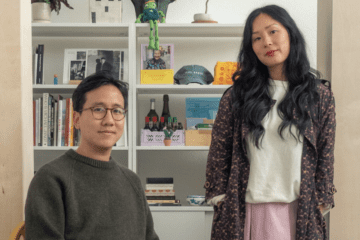Do You Know How Many Homeless Kids are in San Francisco?
The topic of homelessness brings out the absolute worst in San Franciscans. Everywhere from the comments on social media to the speeches politicians make, homeless people become scapegoats, pawns, and punching bags. Rarely, if ever, does the conversation center on the 7% of our city’s homeless population who are kids.
Recently, one of the five candidates for mayor released an op-ed in the SF Examiner primarily focused on SFUSD students experiencing homelessness. With school back in session, we at Broke-Ass Stuart wanted to share a bit more about what it’s like for these youth.
The School Day’s Role
“This topic is super personal because I was a homeless kid going to class. I was in foster care but before that I was unhoused,” says born-and-raised San Franciscan Erica M. Burrell. She’s now the executive director of Bay Area Women’s and Children’s Center (BAWCC), which is located at Tenderloin Community School (TCS).
Before BAWCC, there was no TCS. The organization not only helped build the school but also continues providing everything from hygiene kits to homework help. Burrell’s mother used to get clothing and resources from BAWCC. “Now as executive director,” Burrell says, “I’m like wow. My life is truly a full circle moment.”
BAWCC also plays an important role in advocacy, which is more critical than ever. Burrell explains: “It’s especially important within our school system because of all the changes going on in SFUSD. Those changes are not always clearly explained to the parents.”
Places like schools, resource centers, and libraries are refuges for homeless students. Even a book can be a sanctuary. Burrell, now also a children’s book author, describes reading about Eloise, a girl who lives in a hotel. “I remember being like, ‘She gets EVERYTHING she wants.’ Stories like that told me that something else was possible even though that wasn’t what I was experiencing.”
Why are there homeless kids?
In such a wealthy city, it might astound readers to hear that there are so many homeless students in San Francisco. It’s difficult to say exactly how many students are in this situation. One advocacy group says that number might be as much as 2200, and another says the amount who depend on shelters is 5000. How many homeless kids there truly are depends on how you define homelessness.
“I believe that San Francisco has an ongoing problem because the wealth gap is out of control. San Francisco is unique because we have extreme wealth – mansion money wealth. A lot of money is being circulated but it’s not being circulated and distributed evenly. With that we also have extreme poverty,” Burrell explains. She says there’s not a lack of resources but a problem with how resources are distributed. “It’s disheartening. I’m from the Tenderloin. I was there as a child and the issues that I saw are the same, but I would say they’ve increased.”
How it feels being a homeless kid
Being homeless isn’t just about not having a traditional home with a roof over your head. It might mean staying with relatives, sleeping in a shelter, or even sleeping at your elementary school (like at Buena Vista Horace Mann). Unfortunately, it might also mean facing severe food insecurity.
Burrell speaks from her personal experience when she talks about the unfair expectations for homeless children “to behave the same way regardless of the amount of resources they have access to.” For example, a kid who comes to school hungry is held to the same standard as one who might have had a hot breakfast. “That’s an issue within our educational system and how we train our teachers to show up for students,” she says.
Azikiwee “Z” Anderson, the founder of Rize Up Bakery, describes the problem that inspires him to donate items from the bakery to people experiencing homelessness: “It’s one thing to be an adult who has an opportunity to problem solve and self advocate to others around you to figure out how to not go hungry today. But when you are a child and you go hungry it is different. It changes your reality and relationship to the world and everyone in it.”
Anderson recently spoke on a National Geographic documentary about his own experiences with food insecurity and waiting in a bread line. He says, “Few things are as important as a solid healthy meal.”
In addition to the hunger and cold, the biggest issue that both Burrell and Anderson named is the mental toll that homelessness takes on our most vulnerable members of society, children. “What I see most is depression, sadness, and disconnect, a harder time focusing or literally caring about what’s going on in class because your issues are bigger than learning about the mitochondria of the cell,” says Burrell.
It’s why baker Anderson says he gives back. In a text, he shared, “I help mostly because I know that pain and I don’t want anyone in the world to feel that sadness!”
When asked what she would say to her younger self, Burrell has a powerful message:
“I would say to hold on because you will get to a point in life to where you will actually start to enjoy life. You will love yourself the way you needed to be loved. And you will get to the point in life where you will find the community that will hold you when you feel like you’re going to collapse and fall.
I would tell myself that my current situation is only temporary and that there is a huge life that is on its way if I can just hold on. This is a rough patch. It’s real rough! But it’s just that. It’s a patch. You’ll get to a point where it’s no longer rough.”
To find out more about resources for students experiencing homelessness, visit BAWCC or SAFEH, a project of San Francisco Unified School District. For those who can afford it, you can also buy a Pay It Forward loaf through Rize Up Bakery.









